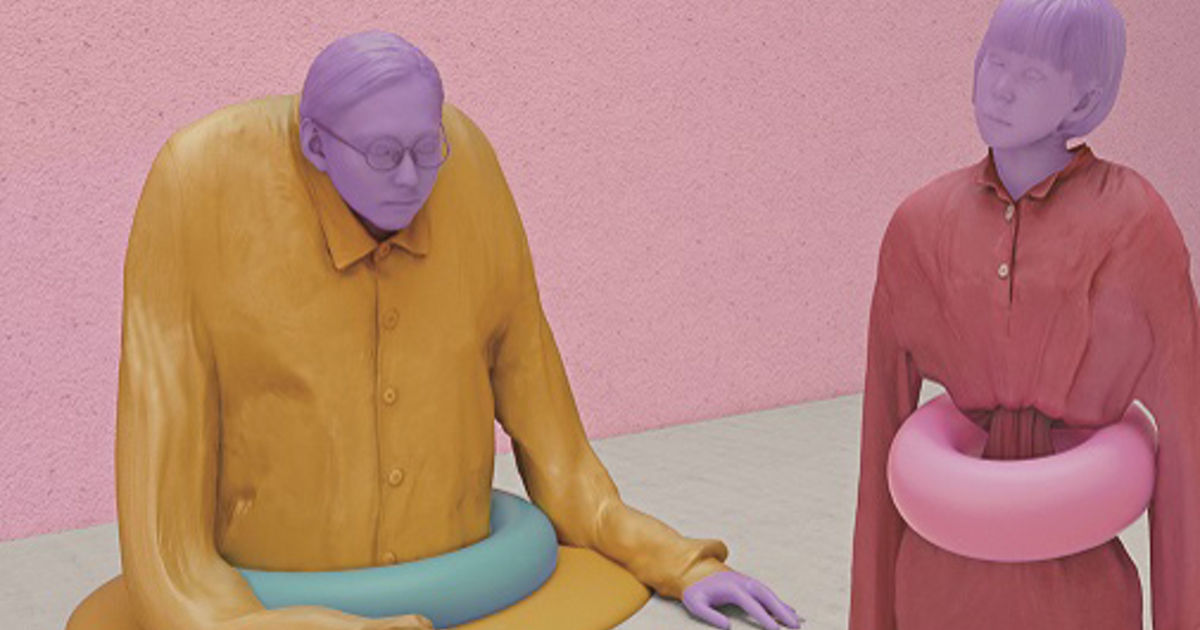Sojiro & Eri: As Kawaii As Can Be
shots explores the surreal & kooky universe inhabited by two of Japan's most exciting young directors.
Associating Japan with the cutesy and the weird may be something of a cliché, but directing duo Eri Sawatari and Sojiro Kamatani have taken that cliché and turned it up to 11, infusing their spots for Japanese brands such as PlayStation and Marukome miso soup with a crazy, surreal beauty, taking the concepts of cute and weird to new, imaginative heights
New directing duo Sojiro & Eri might be two of the most exciting Japanese directors around, but fame hasn’t gone to their heads: they’re polite to the point of self-effacing. Five minutes into our Skype interview, they’ve apologised for dialling in late, the dodgy connection, and their (self-professed) “poor” English. When, after an agonisingly long pause, whispered asides and embarrassed giggling, they have to resort to Google Translate, I’m worried they’re going to commit hara-kiri. It’s a strange, at times surreal, but ultimately charming experience. And that’s exactly what you’d expect from this brilliantly oddball duo.
As anyone who’s seen their spots for PlayStation (We Can Do Everything), Nabco (Automatic Doors) or Marukome (the award-winning Definition of Japanese Kawaii) will know, Sawatari and Kamatani specialise in crafting surreal and visually rich parallel universes, in which blunt-fringed girls burst out of golden eggs and you can spin a giant gorilla around your head with one finger. In fact, if you were trying to explain the essence of Japanese culture to a Martian, you’d just show him one of their films.
Showing a different side
The pair, who only started directing together officially last year, clearly share a similar mindset, despite taking different routes into the industry. Kamatani, who hails from Kyoto, has a background in animation, and cut his directing teeth making Japanoise (Japanese noise music) videos for friends. Tokyo native Sawatari, meanwhile, spent four years in London studying set design, and later animation, before moving back home. They met in 2011 through the director collective, Qotori Film Inc, and hit it off immediately. “In Japanese culture, when you’re talking to someone older than you, you have to be polite and sometimes hold back on your opinions,” laughs Sawatari, “but I would always argue with him.”
They remained friends over the years, while carving out solo directing careers, then, in 2016, the opportunity came up to work together on a spot for Marukome, to promote its new youth-oriented product, the “world’s first” kawaii (cute) instant miso soup. The agency, Dentsu Inc, originally approached Kamatani, who brought Sawatari on board for a “fresh female perspective”. Definition of Japanese Kawaii opens with a girl musing: “He told me I got kawaii (pretty). But my mom said I used to be so kawaii (cute). They used the same vague word, kawaii. What does it mean?” Over the next two minutes, the directors explore the concept from its roots in a traditional Japanese fable through a parade of eye-popping visuals: ancient deities, cheerleaders, neon signs. A flash of thigh as a schoolgirl pulls up her sock. Pastel helices of DNA unspool, paint splatters skulls and, for the grand finale, a girl executes a perfect swallow dive into a bowl of miso soup. It’s utterly incomprehensible – and undeniably cool.
Definition… was a huge undertaking, both directors agree. “We thought about [the concept] very deeply and studied the history of the kawaii culture, which goes back a long way,” says Sawatari of their extensive research. “We wanted to show people something more powerful than the usual girly images.” Time and budget were both limited, but tasked with creating “a really high-level visual style and lots of detail”, they opted to shoot 80 per cent in-camera, rather than rely wholly on CGI. They shot the whole thing in three days, with no sleep. “Sometimes Japanese people work very hard,” shrugs Kamatani.
Definition… is just one example of the duo’s ability to conjure up extraordinary visual masterpieces for the most humdrum of products. Be it coconut-flavoured biscuits or automatic doors, the results resemble video art installations or promos for an obscure but achingly hip band’s latest track. “We want to make artworks from ordinary products, and show a different side that people don’t normally see. We build imaginary worlds around the products,” says Kamatani.
The beauty in dirty and crazy
And brands and audiences are lapping up these unorthodox treatments. “Clients come to us because they want something crazy,” says Sawatari. She refers to the Japanese art of kintsugi, whereby smashed crockery is mended with gold lacquer seams, producing beautiful scars. “Japanese culture can be a bit weird. Japanese people don’t need perfect objects; they can see the beauty in broken or dirty things. And that is our approach.”
Keen to make their mark outside of Japan, last year Sawatari and Kamatani signed to Bandits in France as Sojiro & Eri, and have just wrapped a L’Oréal commercial, their first for the European market. Although it was an enjoyable experience, the language barrier proved challenging, admits Sawatari: “It’s difficult to get into deep discussions and really express our vision.” As such, the pair plan to work with Japanese DPs going forward.
Currently treating on a job for a big German brand, the pair admit they’re more interested in making music videos than commercials at the moment. Recent successes in Japan include a grotesque fairytale, Easta, for J-pop princess Kyary Pamyu Pamyu (Sawatari), and the mesmerising Baku for electronic act Wednesday Campanella (Kamatani), but they’d love to work with more international acts: American experimental band Animal Collective and French popstrel Camille are both on the wishlist.
“We want to change people’s lives and create new values,” concludes Eri. Then, catching sight of the time: “But sorry, we have to go now. Sorry!”
Connections
powered by
- Production Bandits Production
- Director Sojiro & Eri
Unlock this information and more with a Source membership.
)






 Membership
Membership


